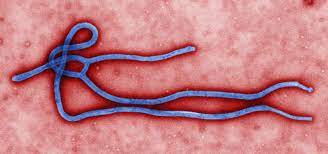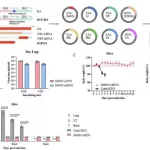Pittsburgh, PA – A groundbreaking study conducted by surgeon-scientists at the University of Pittsburgh School of Medicine and UPMC has revealed that exposure to long-wavelength red light may significantly reduce the risk of blood clots associated with serious conditions such as heart attacks, lung damage, and strokes. The research, which involved both human data analysis and experiments with mice, suggests a potential new avenue for preventing these life-threatening events.
The study, published in [insert journal name if available], explored the impact of different light wavelengths on blood clotting. Researchers subjected mice to 12-hour cycles of red, blue, or white light, followed by 12 hours of darkness, over a three-day period. Notably, the mice exposed to red light developed nearly five times fewer blood clots compared to those exposed to blue or white light.
Furthermore, the researchers analyzed data from over 10,000 cataract surgery patients. These patients had received either conventional lenses, which transmit the full visible spectrum, or blue light-filtering lenses, which block approximately 50% of blue light. Among cancer patients within this cohort, those with blue light-filtering lenses demonstrated a lower risk of blood clots compared to those with conventional lenses.
“These findings are incredibly promising,” stated [insert name of lead researcher if available], a surgeon-scientist at the University of Pittsburgh. “We’ve long recognized the influence of light on various biological processes, and this study provides compelling evidence of its role in blood coagulation.”
The scientists hypothesize that understanding the mechanisms by which red light reduces clotting risk could lead to the development of more effective and convenient medications or therapies, potentially replacing the need for continuous red light exposure.
This research highlights the potential for light therapy as an affordable and accessible treatment for millions worldwide who are at risk of blood clots. However, the researchers emphasized that these findings require confirmation through rigorous clinical trials before any widespread implementation.
“While the results are encouraging, it’s crucial to remember that this is preliminary research,” [insert name of lead researcher if available] cautioned. “Clinical trials are essential to validate these findings and determine the optimal parameters for red light therapy in preventing blood clots.”
The study underscores the growing understanding of how light exposure influences health outcomes, potentially paving the way for innovative and cost-effective treatments for a range of medical conditions.
Disclaimer: The information presented in this article is based on preliminary research and should not be interpreted as medical advice. Individuals should consult with their healthcare providers before making any decisions related to their health or treatment. The findings discussed require further validation through clinical trials before any definitive conclusions can be drawn regarding the effectiveness of red light therapy in reducing blood clot risks.












